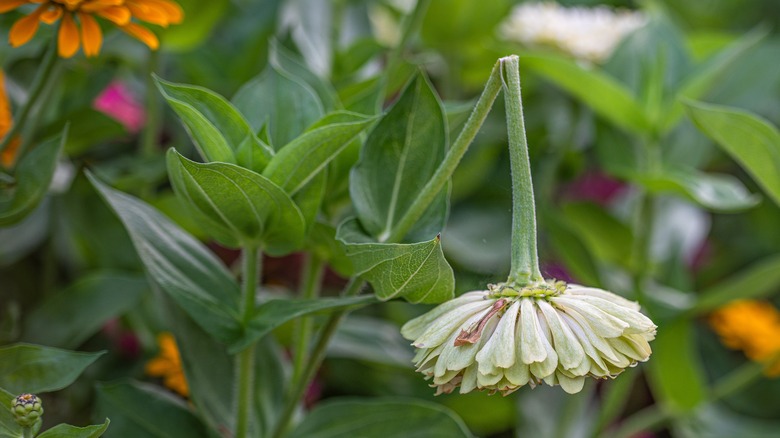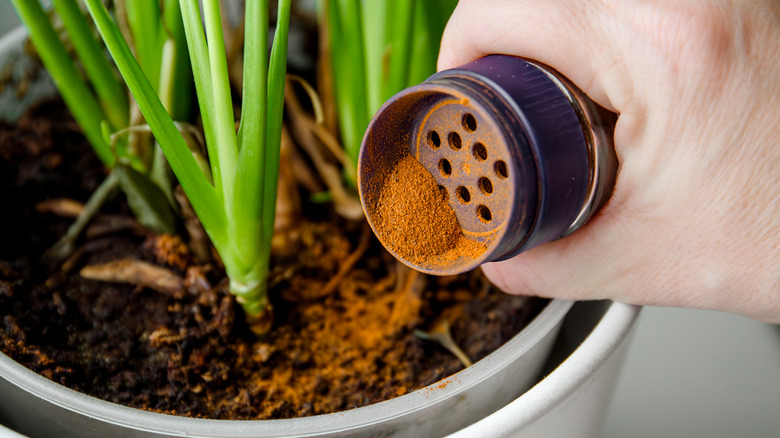Why Do People Use Cinnamon To Fix Broken Plant Stems & Does It Work?
Social media feeds buzz with tips on healing injured plants with cinnamon. Anecdotal claims abound on TikTok, Instagram, and Pinterest, and a recent miracle use is supposedly saving broken plant stems. Data show that cinnamon can aid plant health in some ways, but is healing bruised or broken stems among the benefits?
Gardening enthusiasts share that with a cotton swab splint and a bit of cinnamon on the injury, a damaged plant stem will bounce back in no time. YouTuber Creative_Explained suggests wetting the bent area of the stem, applying some cinnamon to the injury with a cotton swab, then binding the swab to the branch as a splint until the wound heals. While the cinnamon part of the equation has no known scientific support, this tip still does hold some promise. However, there doesn't appear to be scientific research backing up the insistence that this spice helps to heal broken stems. But, there are plenty of other ways you should be using cinnamon in your garden.
Why people claim this works
Gardening social media influencers are touting the benefits of applying ground cinnamon to a break or a bend in a stem with the hope that cinnamon will prevent bacteria from setting in on damaged areas. There is evidence that ground cinnamon can inhibit fungus growth or even kill it off. However, it must come directly into contact with the fungus to work. These findings show cinnamon more as a reactive solution than a preventative one.
What may be working is the splint. Amateur gardeners share success stories online of binding a broken stem with a splint made of anything from a cotton swab to a pencil. People have even used drinking straws to save a bent or broken plant from certain death. They report that after a few weeks, the bend or break shows signs of healing. Yet, there's also a lack of scientific evidence available that splints are the key to healing.
What can cinnamon do for plants?
Cinnamon is known as a gardening powerhouse among hobbyists, despite whether scientific data can back up all of its purported uses. Two research-backed applications for cinnamon in the garden are to promote root growth as an insecticide .
All hope for your green buddy's broken limb may not be lost. If your plant may be a type that's easily propagated, you could have a chance of saving the stem by cutting it off using a mix of cinnamon and honey as a rooting hormone, and giving the cutting a chance to sprout new roots. For successful propagation, your plant should be moist, under diffused lighting, and the temperature should be around 70 degrees Fahrenheit. Pest-prone plants may benefit from a sprinkling of cinnamon around their base. There is evidence that suggests you may be able to evict garden slugs with this popular kitchen spice.

